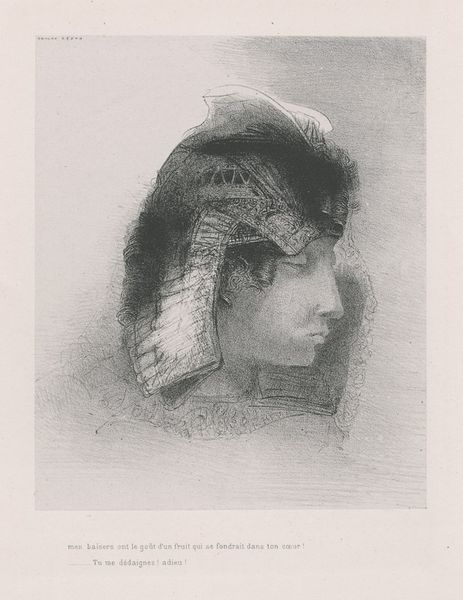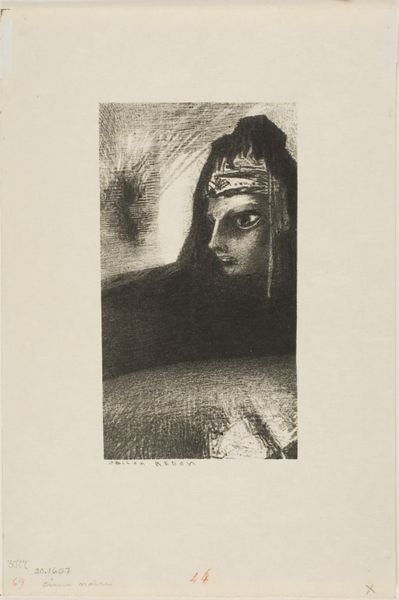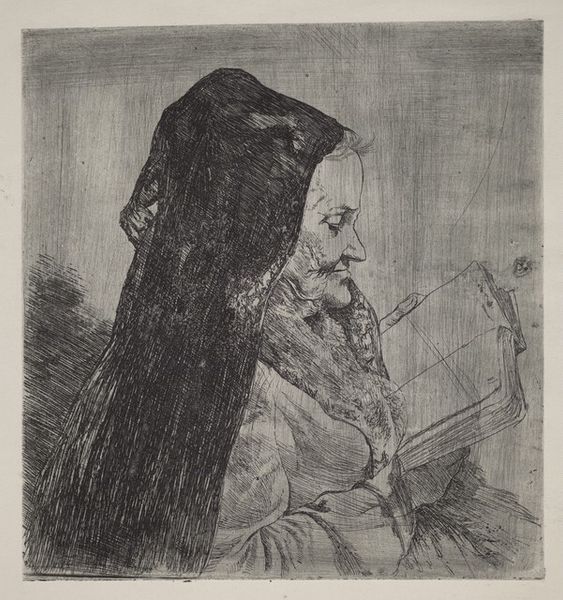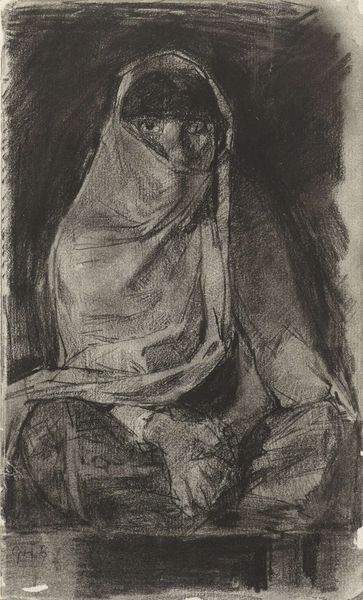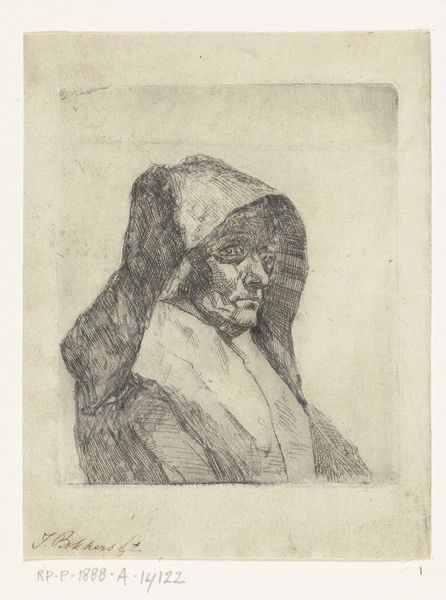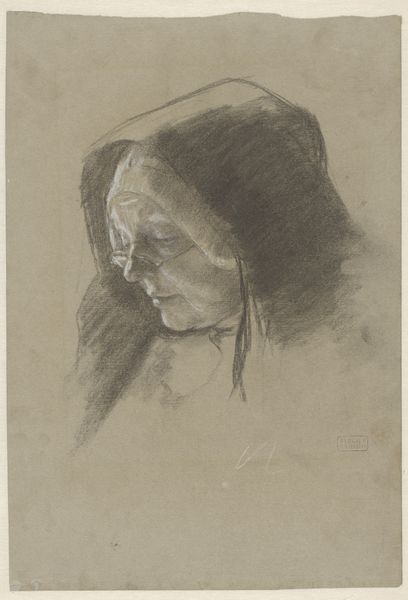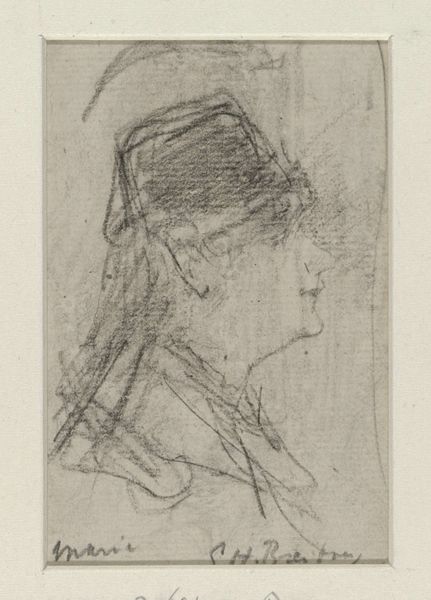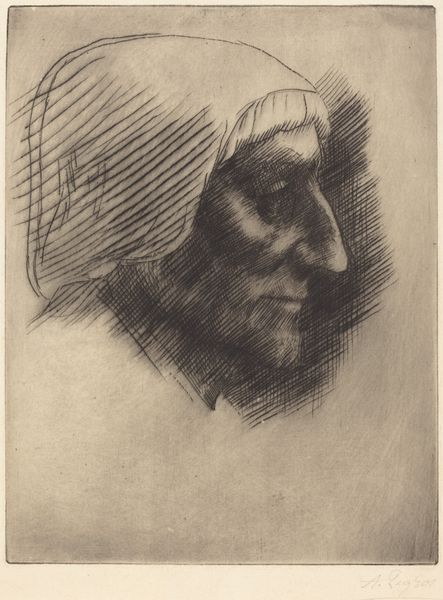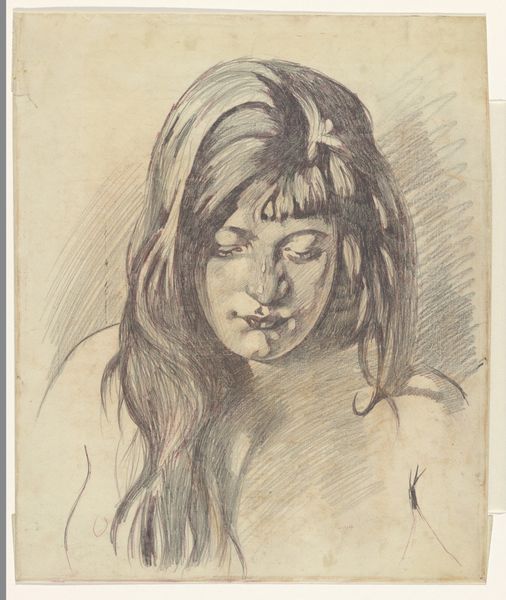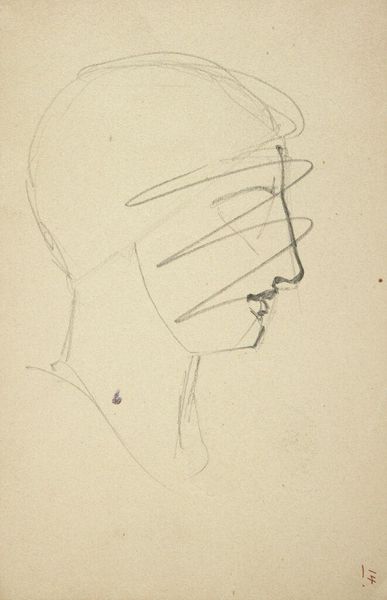
Je t’adore a l’egal de la voute nocturne. O vase de tristesse, o grande taciturne 1890
0:00
0:00
drawing, graphite
#
portrait
#
drawing
#
symbolism
#
graphite
#
portrait drawing
Copyright: Public Domain: Artvee
Editor: We are looking at "Je t’adore a l’egal de la voute nocturne. O vase de tristesse, o grande taciturne," a graphite drawing by Odilon Redon, made in 1890. The portrait possesses a really muted, melancholic feel. What do you see in this piece? Curator: I notice first how Redon has utilized graphite, a readily accessible material, to conjure up what I think of as a dream-like figure. Think of the labor involved. The repeated hatching, creating form from simple lines. Is Redon elevating this humble medium, challenging the traditional hierarchy of artistic materials? Editor: That’s a compelling idea. It’s interesting how he’s not trying to hide the process; you can see every stroke. Does that affect how we should view the subject? Curator: Absolutely. Look at the mass-produced paper – it is not fine art paper. Consider the social context of Redon’s time. The Industrial Revolution allowed wider access to art supplies. Redon seems to engage in artmaking accessible to a wider audience. Perhaps the 'taciturn' subject here represents more than just sadness; it represents the working classes. What do you think of that proposition? Editor: I had not considered that but that adds a new dimension to it. I had originally thought only of Symbolism and dreamy romanticism but now, I'm now starting to wonder if the meaning changes when you consider Redon's choices concerning the materiality. Curator: Exactly! Thinking through the materials and the processes gives us an entry into Redon's time and even allows us to reconsider some initial impressions. Editor: I’ll certainly be looking at art through a more material lens from now on. Thanks.
Comments
No comments
Be the first to comment and join the conversation on the ultimate creative platform.
